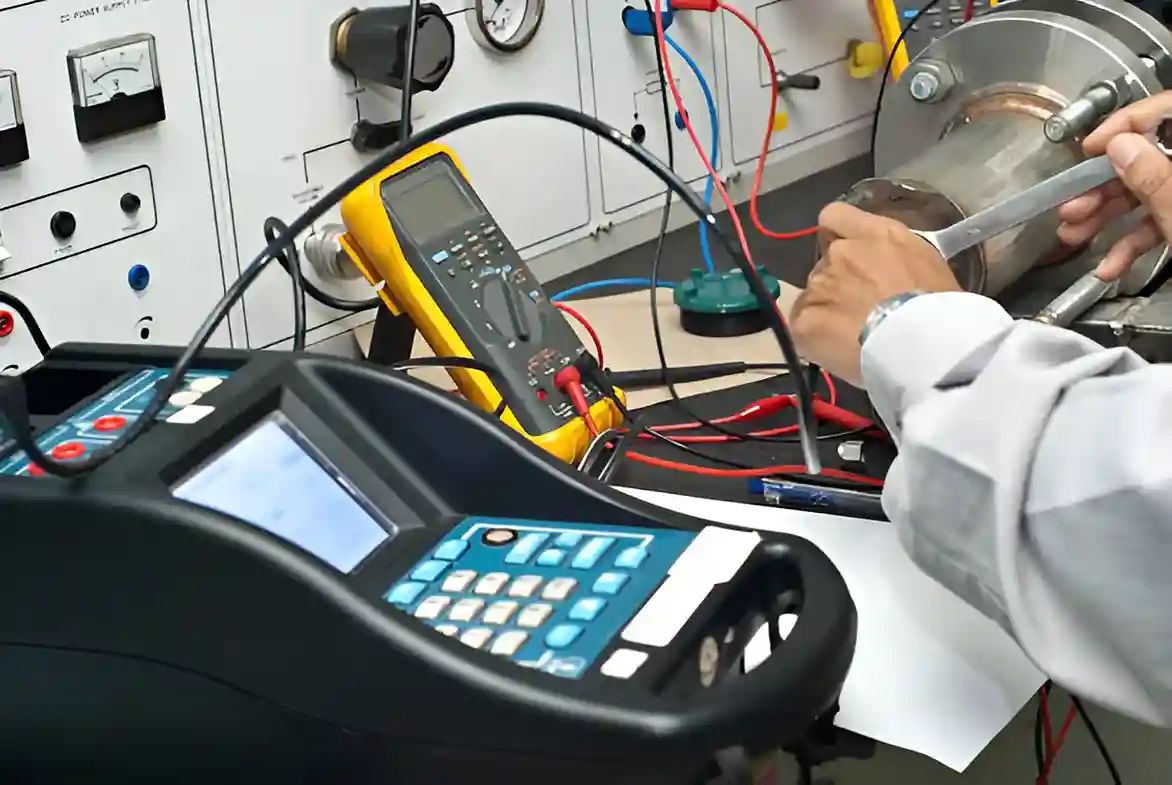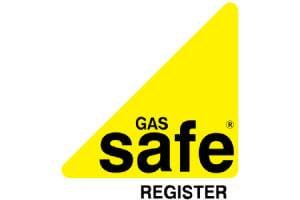
Perceiving PAT test regulations is primary for managing safety at work. Although not legally required, the Health and Safety at Work Act 1974 places the responsibility on employers to ensure electrical equipment is safe. Many businesses overlook the importance of compliance, which can lead to serious consequences, affecting both employee safety and legal compliance.
Main Points
- While PAT testing is highly recommended for electrical safety, it is not a legal requirement; nonetheless, employers are responsible for maintaining a safe working environment.
- Regular testing frequency varies with equipment type and risk level; generally, they need to be assessed annually.
- Employers have a legal obligation under the Health and Safety at Work Act 1974 to ensure the safety of electrical equipment.
- Non-compliance can lead to legal consequences, fines, and voided insurance policies, heightening financial risk for businesses.
- Choosing certified assessors guarantees adherence to safety standards and boosts trust, reputation, and operational efficiency at work.
What Are PAT Test Regulations?
Although the details may differ by region, PAT test regulations typically cover the standards and procedures necessary for inspecting and testing electrical appliances to ensure safety.
These regulations specify the duties of employers and asset owners in ensuring their electrical equipment is safe to use. Key aspects include the testing frequency, which may vary depending on the type of equipment and its environment.
The regulations also specify the qualifications of personnel conducting the tests, ensuring they have the required training and expertise.
Furthermore, the regulations emphasise the importance of accurate documentation, which acts as proof that testing has been carried out and any necessary repairs have been completed.
Adhering to these regulations not only shields individuals from electrical hazards but also reduces potential legal liabilities for businesses.
Ultimately, following PAT test regulations is essential for ensuring a safe working environment.
Legal regulations for PAT Testing in the UK
Is PAT testing legally mandatory in the UK? The short answer is no; however, it is strongly recommended and often regarded as essential for ensuring electrical safety.
While the Health and Safety at Work Act 1974 obliges employers to provide a safe workplace, it does not specifically require PAT testing regulations.
Nonetheless, the following points clarify its importance:
- Duty of Care: Employers must ensure that electrical equipment is safe to use, and PAT testing is a practical method to meet this obligation.
- Insurance Compliance: Many insurance companies require regular PAT testing as part of their policies, making it a necessary compliance for many businesses.
- Legal Consequences: Failing to ensure electrical safety may result in legal consequences, such as fines or being held responsible for accidents.
Testing Frequency by Equipment Type and Risk Level
When determining the appropriate frequency for PAT testing, it is essential to consider both the type of equipment and the related risk level. Different types of equipment pose varying levels of risk, which affects how often they should be tested.
For instance, portable appliances used in high-risk environments like construction sites might need to be tested every three to six months. Conversely, equipment in lower-risk areas like offices might only need to be tested annually.
Furthermore, the condition and age of the equipment play an essential role in determining the testing frequency. Older appliances or those showing signs of wear might need more frequent inspections.
Organisations should also take into account the manufacturer’s recommendations and any relevant legal requirements specific to their industry. By assessing both the type of equipment and the level of risk, businesses can ensure compliance while maintaining a safe working environment.
What Must Be Included in a PAT Test?
A comprehensive PAT test must include several key elements to verify the safety and operation of electrical appliances. These components are vital for ensuring compliance with regulations and safeguarding users from risks.
- Visual Inspection: The initial step includes a thorough visual inspection of the appliance and its power cord for any signs of damage, wear, or incorrect use.
- Electrical Testing: This involves measuring insulation resistance, earth continuity, and performing functionality checks to ensure the appliance operates correctly under normal conditions.
- Labelling and Documentation: After testing, each appliance must be properly labelled with the test results, indicating pass or fail, and logged for future reference.

Consequences of Not Following PAT Test Regulations
Failing to follow PAT test regulations can lead to serious legal and financial consequences. Non-compliance might result in hefty fines from regulatory authorities, especially if an incident occurs due to faulty equipment.
Companies may face legal action if they fail to ensure the safety of their employees and customers, which can result in costly compensation claims and harm to their reputation. Furthermore, insurance policies may be invalidated if proper testing procedures are not followed, leaving businesses financially exposed.
Employers might also face increased scrutiny from health and safety inspectors, leading to more inspections and higher compliance costs. Ultimately, the consequences of ignoring PAT test regulations go beyond immediate financial issues, as they can compromise workplace safety and staff morale.
Therefore, following these regulations is crucial for any organisation aiming to sustain a safe and compliant environment.
Record-Keeping and Labelling Requirements
Accurate record-keeping and labelling requirements are essential components of complying with PAT test regulations, ensuring all electrical equipment is properly tracked and monitored.
Following these guidelines ensures safety and accountability in an organisation.
Essential elements of good record-keeping and labelling are:
- Detailed Records: Each PAT test must be carefully documented, noting the dates, results, and the name of the tester.
- Equipment Identification: Each piece of equipment must be distinctly labelled with a unique ID that shows its testing status and the date of the most recent test.
- Accessibility: Records and labels should be readily accessible to all relevant personnel, allowing them to verify the safety status of electrical equipment anytime.
Your Legal Responsibilities as an Employer or Landlord
Employers and landlords hold essential legal duties for the safety of electrical equipment on their premises. They must ensure that all electrical appliances are regularly tested and maintained to avoid risks such as electric shocks or fires. Following PAT test regulations is integral to meeting these responsibilities.
The following table summarises key responsibilities:
| Responsibility | Description |
|---|---|
| Regular Testing | Conduct PAT tests on all electrical equipment at specified intervals. |
| Documentation | Maintain thorough documentation of test outcomes and maintenance actions. |
| Employee Training | Train staff on safe equipment use and reporting faults. |
Not fulfilling these responsibilities may lead to serious consequences, such as legal action and liability for injuries. As a result, understanding and complying with PAT test regulations is essential for maintaining safety standards in the workplace or rental properties.
Impact on Insurance and Business Reputation
Adhering to PAT test regulations significantly impacts both insurance coverage and a business’s reputation. Companies that disregard these regulations may encounter serious challenges, including:
- Increased Insurance Premiums: Insurers might charge higher premiums or refuse coverage entirely for businesses that are not compliant, considering them high-risk.
- Legal Liabilities: Non-compliance can result in legal consequences, leading to expensive fines or settlements that may strain financial resources.
- Damaged Reputation: Not complying with PAT testing can damage a business’s reputation, resulting in a loss of customer trust and potential clients.
In today’s competitive market, maintaining compliance is not merely a legal requirement; it is an essential part of risk management.
Companies that prioritise PAT testing show responsibility and commitment to safety, which can boost their reputation in the industry and among consumers. As a result, complying with these regulations is vital for maintaining both insurance coverage and a positive business image.

Benefits of being compliant with PAT test regulations
While many businesses see compliance with PAT test regulations as just a legal duty, the advantages go well beyond avoiding penalties. Following these rules improves workplace safety by reducing the risk of electrical accidents, thus safeguarding employees and clients alike.
A safe working environment enhances productivity and morale, resulting in better employee retention and satisfaction.
Additionally, adhering to regulations can improve a company’s reputation by showing a commitment to safety and professionalism. This positive image can draw in new clients and partners, ultimately supporting business growth.
Furthermore, regular PAT testing can detect equipment problems early, helping to avoid expensive repairs and downtime. Lastly, adhering to regulatory standards can make insurance claims easier, as insurers often prefer businesses that prioritise safety.
Choosing certified assessors
Selecting certified assessors for PAT testing is essential, as their expertise guarantees thorough and accurate testing of equipment. Ensuring compliance with regulations requires assessors with the right qualifications and experience.
When selecting certified assessors, take into account the following factors:
- Accreditation: Ensure the assessor possesses relevant certifications from recognised bodies, confirming they are trained in the latest safety standards and practices.
- Experience: Look for assessors with a proven track record in PAT testing. Their practical experience enhances a deeper understanding of various equipment and potential issues.
- Reputation: Research the assessor’s reputation within the industry. Positive testimonials and reviews provide insights into their reliability and service quality.
Frequently asked questions.
Conclusion
In conclusion, understanding and following PAT test regulations is essential for ensuring workplace safety and legal compliance. Although not legally mandatory, regular testing helps protect employees and reduces risks associated with electrical equipment. Employers and landlords must acknowledge their responsibilities, as failure to comply can lead to serious consequences, including legal penalties and insurance problems. Ultimately, prioritising PAT testing not only protects individuals but also boosts business reputation and promotes safety and responsibility.







